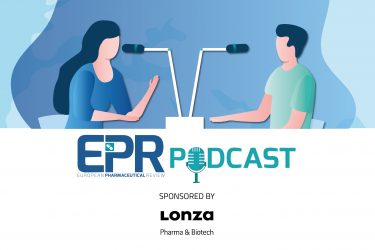European Pharmaceutical Review podcast

EPR Podcast Episode 2 – Bioavailability enhancement with Dr Deanna Mudie, Lonza

In European Pharmaceutical Review’s latest podcast episode, supported by Lonza, Assistant Editor Hannah Balfour discusses all things bioavailability with Dr Deanna Mudie, a Principal Scientist in Research and Development at Lonza’s site in Bend, Oregon, US.
“For oral drugs, bioavailability is the fraction of the administered dose that actually reaches your systemic circulation unchanged,” explains Deanna, continuing that it must be high to ensure all or most of the drug can reach its site of action for the best therapeutic effect. She went on to explain how dissolution and solubility both factor into how much drug reaches the circulation and some of the key drug properties that affect them, including particle size and lipophilicity.

Dr Deanna Mudie, Principal Scientist in Research and Development at Lonza’s site in Bend, Oregon, US
Deanna also outlines the various methods for improving bioavailability, including reducing the particle size of a crystalline drug or using a salt form, as well as formulation techniques like creating amorphous solid dispersions (ASDs). “Another method which is generally more challenging… is by improving the permeability of the drug,” which she states can be done by creating a pro-drug or by including permeation enhancers or utilising nano-sized drug species.
She also goes into more depth about ASDs specifically, adding that they work by using the amorphous form of the drug instead of the crystalline one, as it has a higher solubility, and outlining their various benefits and a few examples currently on the market.
Deanna also discusses how, with any drug product, drug developers need to make sure that they not only achieve high performance in the body but that they also remain stable over the drug product shelf life. To ascertain its performance in the body, they use a kind of in vitro analysis called dissolution testing, which simulates the gastrointestinal environment, using different fluids and other physical properties to determine how fast and how much of a drug would transition from the gastrointestinal tract to the bloodstream.
in vitro dissolution testing has really been the gold standard for helping to assess, not only how quickly, but also to what extent a drug appears in the bloodstream”
However, the diverse range of potential medias can be challenging, so Deanna explained Lonza’s three step approach for selecting the right media: determine the testing goal, ascertain the target population of interest (eg, human, canine, etc) and select the dissolution apparatus and media that represents the key features of the properties that may affect the drug in this species. “When you use a dissolution medium selection approach like this it can be really powerful because it combines the knowledge of key physiological properties with the drug formulation properties… this can enable ‘right first time’ development, reduce the costs and increase the development speed of medicine,” states Deanna.
Find out about all of this and more in this podcast, supported by Lonza.
Enjoyed this podcast? Let us know in the comments and look out for European Pharmaceutical Review’s next episode, coming soon!
The post <em>EPR</em> Podcast Episode 2 – Bioavailability enhancement with Dr Deanna Mudie, Lonza appeared first on European Pharmaceutical Review.






 Visit Podcast Website
Visit Podcast Website RSS Podcast Feed
RSS Podcast Feed Subscribe
Subscribe
 Add to MyCast
Add to MyCast